June 13, 2022. Berlin, Germany to Porto, Portugal.
Today we are off to Porto in Portugal. Getting to the airport in Berlin was easy, as we again used our €9 monthly ticket.
However once we got there things started to go downhill.
We had to check in via a machine, as Ryanair wanted €50 each to have their staff do it.
It was going to be late by the time we arrived in Porto, so we felt we needed to get something substantial to eat.
There were plenty of places advertised in the airport but nothing was open.
So it was a salami baguette for dinner.
Then finding out what lounge the aircraft was leaving from took a long time. When we finally got there, there were nowhere near enough seats for a plane load.
Half the passengers ended up standing, or sprawled on the floor.
Then the flight was 20 minutes late.
I have never had much time for Ryanair and this just confirmed my dislike of this airline.
They are not only a low cost airline they are ‘cheap’ as well.
It was an evening flight to Porto, so on arrival we went straight to an airport hotel, The Park Hotel Porto Aeroporto.
June 14, 2022. Porto, Portugal.
Today was rather an inactive one, as we were just getting settled into Portugal and our first big adventure. We were also waiting for the arrival of Ev, Steph and their young daughter Aida, who were going to be travelling with us.
Late in the morning we moved from the airport hotel to our Airbnb in Porto.
Later that afternoon E, S and A arrived and then we all settled into our accommodation.
We were going to spend just over two weeks exploring this beautiful country.
It would mainly be by car, travelling from Porto in the north, to Lisbon, the capital, in the south.
June 15, 2022. Porto, Portugal.
It was 1974 when we were last in Portugal – this time was very different.
Back then, we were a young couple, living in Manchester, England and had brought our VW Kombi Van across the channel to tour Portugal and then travel down to Morocco.
Forty eight years later we were with our son, his wife and their young daughter, travelling together and staying in Airbnbs, not living out of our van and cooking for ourselves.
Fortunately we had a Metro station close by, so it was easy to get into Porto city centre to rediscover city.
Tiles were the architectural feature I had forgotten about and now they struck me the most.
Igreja de Santo Ildefonso, an 18th Century church, was our first tile encounter.
This was followed by many more examples of architectural tiling. This ornamental art form is highly decorative and a symbol of Portugal to the world.
Tiling was first developed in Mesopotamia and Ancient Egypt, almost 3,000 years BC, but it was the the Muslims that introduced the art form to Europe in the 7th Century.
In the Iberian Peninsula, it was the Moors who introduced tiling to Portugal and Spain.
The colours of blue and white seem to dominate Portuguese tiles and that, according to history, comes from the influence of Chinese porcelain.
Porto is regarded as the tile capital of Portugal. However they can be found all over the country, from small villages to major cities.
We wandered the streets and everywhere we went we encounter Portuguese Tarts, either being sold or consumed.
Needless to say we had to try them.
The Dom Louis 1 Bridge and the Douro River dominates the city, as do the steep, narrow streets.
On our walk we came across the monument to Prince (The Navigator) Henry of Portugal (1394–1460).
The Prince was a central figure in the maritime discoveries of the Portuguese Empire in the 15th Century.
We finally got to the river late in the day but rain and lack of time stopped us from crossing it.
This would have to wait for another day.
June 16, 2022. Porto, Portugal.
Today was spent doing what we didn’t finish yesterday, mainly crossing the Douro River on the Dom Louis 1 Bridge.
On the other side of the river we found a park for Aida to play in – they seem to be in short supply.
Then it was down to the river to have lunch, followed by a port – naturally.
We were in the Port Wine District, on the Douro River, and there was a huge sign, atop a building, for Sandeman, a very popular Portuguese port.
Sandeman was established in 1790 and is world famous, especially the logo. This features a man known as the ‘The Don’ who is wearing a Portuguese student cape and broad brimmed Iberian hat.
It was still overcast and rain threatened.
After lunch we took a trip on the Funicular Teleféyico de Gaia. This gave us a great view of the river and the city.
Then, after a bit more city walking, we headed back over the river and visited the São Bento Railway Station, which is a UNESCO listed site in the Old City Centre.
Built in 1905 the station is regarded as one of the jewels in the crown of Portage tiling.
It certainly is impressive and had to be seen.
It was then back on to the underground for a return trip to our Airbnb for dinner.
June 17, 2022. Porto, Portugal.
We stayed close to our accommodation in the morning, as we had to return to the airport to pick up a rental car in the afternoon.
We felt that the best way to travel to Lisbon from Porto was to get a rental, that way we were in control.
Firstly it was a coffee at Ponto 2, which was right next to our Metro station.
It became our go-to in Porto, as it was a short walk from our accommodation and had a large indoor and outdoor space and the coffee wasn’t that bad. Aida loved the Portuguese style croissants there.
Then Monumento aos Heróis da Guerra Peninsular, for a photo opportunity before continuing on to the Opera House (Casa da Musica).
This is the home of the National Orchestra of Porto and an amazing piece of architecture.
Completed in 2005 and designed by Rem Koolhaas, it was the result of an international architectural tender that was motivated by Porto becoming the European Capital of Culture in 2001.
The interior is just as impressive as the outside and it even boasts it’s own original typeface for the signage.
It was built on the site of an old tram terminus.
It was then off to the Mercado Bom Sucesso for lunch with lots of aggressive and hungry pigeons.
Back to the house and then the Metro to the airport with Evan, and Aida, just to make sure we got the child seat that had been pre ordered. We felt we might need some living proof that we really did need the seat.
The seat wasn’t an issue but we were faced with a very aggressive sales woman who made sure that I took every ‘On Sell’ on offer.
I took what I needed as I did have my own insurance and felt that would cover all contingencies.
We did get a rather nice Renault 6 speed, manual Kadjar Diesel, Black Edition.
As I was going to be the designated driver, my task then was to get my brain around driving on the right, with a left hand drive vehicle again.
Once we got back from picking up the car, it was off to the local supermarket to get food for the next few days.
We had real fun driving out from the supermarket site, as it didn’t seem to have a clear exit plan.
June 18, 2022. Porto, Portugal.
Fortunately our accommodation had good parking underneath, so we could do day trips and always be able to return to a free spot.
After finally getting one of the SatNavs to work properly, we drove to Amarante. The Renault had one, I had one and of course we all had phones but we did have trouble getting the one in the car to work properly.
Our first photo opportunity was the Church and Monastery of St. Gonçalo. Built in the Italian Renaissance style, both were established in 1543, by João II and completed in 1620.
We then wandered around Amarante for a while before driving east to Pinahão.
This charming little town, is in the heart of the Port Wine country and sits on the banks of the Douro River.
We had lunch overlooking the river and then walked from there to the Pinahão Railway Station.
This is on the main train line from Porto and attracts many tourists. Again the blue tile work at the station was stunning.
It was then off to the House of Sandeman, at Quinta do Seixo, for a Port Wine experience.
As I was the ‘designated driver’ it was only a sip for me, however we did buy a bottle for Ron – ‘Later on’.
This is the main outlet of the famous Sandeman brand and sits in the heart of the Douro Region overlooking the Douro River valley and river.
Out the front, with the best views, is the iconic Sandeman Don, complete with his Portuguese student cape and Jerez sombrero.
We had seen him atop a building in Porto and now here he was again.
Sandeman Wine was founded in 1790 by Scotsman David Sandeman. It wasn’t until 1928 that the iconic logo came into existence. It was designed, also by a Scot, George Massiot Brown.
The company was sold to Seagram in 1979 and is currently owned by the Portuguese company Sogrape. However a descendant, George Thomas David Sandeman, is a member of the board of Sogrape Vinhos.
June 19, 2022. Porto, Portugal.
A delicious morning coffee in Porto, then off for another day of touring.
This time we headed north, for about an hour, to the historically significant city of Braga.
It hosts Portugal’s oldest Catholic archdiocese, the Archdiocese of Braga.
We were in the midst of Catholic celebrations, as the Festival of John the Baptist was in full swing when we arrived.
The actual festival wasn’t for a few days yet, on June 23, but there was still a lot of celebration and preparation happening when we arrived.
We enjoyed the atmosphere in the town centre then went for a wander around.
Portugal is famous for its sardines and they were certainly being celebrated in one particular shop.
The walls were lined with hundreds of cans of the salty treat.
We visited the Gardens of Santa Barbara, the Archbishops Palace (16th, 17th and 18th Centuries), the Town Hall (1754-1865), the Arch of the New Gate (1770) and Braga Cathedral (1089).
All the time the sky’s were darkening – rain was certainly on the way again.
We drove to the Sanctuary of Bom Jesus do Monte, which is high on a hill overlooking Braga.
And by the time we got there the rain had found us.
This sanctuary, was first developed in 1373, however the present structure was started in 1722.
The Baroque church, at the top of the stairway, was built around 1725 by architect Manuel Pinto Vilalobost.
After dodging the storm and trying to stay dry, Ev, Steph and Aida took the funicular back down. Thea and I then drove down to meet them and headed back to Porto.
June 20, 2022. Porto to Nazaré, Portugal.
Today we left Porto and drove to south to Nazaré. It was a relatively easy 2 hour drive, mainly on the freeways.
Even though our Renault Kadjar seemed spacious, it did take a bit of an effort to get everything in for the move to Nazaré.
But then we were travelling with a small child and this therefore included extras like a cot and portable pusher.
Nazaré is a very popular seaside resort on the Costa de Prata, or Silver Coast. This is understandable, given the size and length of the sandy beach.
This beach area is known as Praia, which is one of three neighbourhoods that go to make up the town.
The other two are Sitio and Pedermeira, which are elevated.
The earliest settlements were in these two towns, as they were high up and a refuge from the invading Vikings.
The Nazaré Funicular, from Praia, is an easy way to get to Sitio, which sits on a clifftop overlooking the beach.
Once we got settled into our apartment we went for a stroll around town. We were staying very close to the beach and an easy walking distance into the main town centre.
We also had good on-site parking again, so we didn’t need to worry about the car.
Now the weather was more pleasant with blue sky and moderate temperatures. However nothing like the heat wave that other parts of Europe were experiencing.
It wasn’t the ‘Tourist Season’ yet in Nazaré and the streets and beach were rather quiet.
Our accommodation was very spacious, with a large kitchen area as well as an equally large dining and living space.
That night’s dinner was a home cooked affair.
June 21, 2022. Nazaré, Portugal.
It was a late start to the morning, then off for another great Portuguese coffee.
We found the coffees in Portugal to be very much to our liking. They are full of flavour, strong and never too large and drowned in water.
Fortunately the ‘Americano’ style hasn’t reached here yet.
We then explored the Nazaré Municipal Market, which wasn’t exactly buzzing.
In the afternoon we took the Nazaré Funicular or Elevador da Nazaré to Sitio, which sits on the cliff overlooking the main beach.
From the top of the funicular it was a good walk to Forte de São Miguel Arcanjo but unfortunately it started to rain so out came the coats and umbrellas.
Before reaching the fort we stopped to look at Santuário de Nossa Senhora da Nazaré.
This is an ancient and imposing Marian shrine, that was founded in the 14th Century and is in memory of a miracle that occurred under the intercession of the Virgin Mary.
Praia do Norte is the beach below the Forte de São Miguel Arcanjo and home to some of the world’s largest waves.
Within the fort there is a tourist centre and memorial to these huge swells with many photos and stories of the feats that have occurred here.
Currently the record for the biggest wave surfed at Praia do Norte is held by the Brazilian, Rodrigo Kota, and stands at 24.4 metres or 80 feet high from trough to crest.
Also near the entrance to the fort stands the Escultura Veado Surfista. This is a 6.30 metre, steel and marble sculpture of a surfer with a deers head and antlers.
Created by the Portuguese sculptor Adália Alberto and installed in 2016, it honours the legend of Nazaré.
‘When in Rome’ or in this case ‘When in Portugal’ do as the locals do. So tonight we had sardines for dinner at Taberna d’ Adélia.
June 22, 2022. Nazaré, Portugal.
The weather was still unusually cool for Summer. In fact it had been warmer in Berlin and that was so much further north.
After our day in town yesterday we were off to explore some of the surrounding areas today.
At the price of a rental you can’t leave the car in the garage for too long.
We headed for Ōbidos, a UNESCO City of Literature.
This was about an hours drive south of Nazaré, on the more scenic route, as we didn’t need to take the toll roads.
Just before we reached Ōbidos we discovered a Roman Aqueduct just outside of the town. Apparently there are about three kilometres of aqueduct, which connects to a further three kilometres of tunnels, which all begin at a natural spring near Usseira.
One of the city gates in Ōbidos was decorated with Azulejo. This is a form of Spanish and Portuguese painted tin-glazed ceramic tile work.
Yet again more beautiful Portuguese tiles.
St. Mary’s Square was a big tourist draw and surrounded by many cafes and restaurants.
Naturally this became our spot for lunch.
On our walk and just on the edge of the main township is the Castle of Ōbidos. This is a well preserved Medieval building.
It was a relaxing day of touring and that night we ate at home again while preparing to move again tomorrow.
June 23, 2022. Nazaré to Sintra,Portugal.
Again we were heading south, this time to Sintra.
It was a easy two hour drive to Sintra but once we got there it was hell finding a parking spot.
We did get a spot, that was about 100 metres from our room. However it was on a corner and possibly not legal.
I’ll wait and see if I get caught.
Our accommodation was yet another Airbnb and on the top floor of the apartment block. To get to the top, with all our gear, they were steep steps to climb.
This was a sign of things to come.
The village was set in the mountains outside of Lisbon and had some of the windiest streets I have ever driven around.
It was a labyrinth of hairpin bends, some required a three point turn to negotiate. Plus there were a multitude of one way streets and very steep hills.
There was very little available, or easily accessible parking anywhere in the city and not just near or room.
We walked into the town centre and had some lunch. I wasn’t about to give up our precious parking spot, legal or not.
This was mostly down hill and it was only on the return journey that we realised just how steep the streets were.
I’m glad we are only here for two nights.
Lunch was at Cafe da Vila and at €65 for all of us not to bad. They were really pushing their lower prices, which was evident by the €8 MENU signs all over the cafe walls.
We needed to get food for breakfast and provisions for Aida, so our next task was to search for a supermarket. We found a small one, near the centre of town, so had to lug around our purchases for the rest of the day.
We continued our walk around the town, fortunately most sights weren’t too far apart.
Near the centre was the National Palace of Sintra. Unfortunately it was getting late in the day and there was no time to explore the whole site, so we just settled on visiting the garden.
This is said to be the oldest palace in Portugal, with a royal structure on this site for as long as Portugal has been existence.
The palace is dominated by two, giant conical chimneys, hovering over the palace kitchen.
For dinner we found a craft brewery, Villa Craft Beer and Bread. It was not in the main tourist area so not crowded.
The food was good and the local craft beer was excellent.
Then it was a very steep walk back to our accommodation.
Thea was starting to suffer from the climbing and we became a little suspicious about her health.
June 24, 2022. Sintra, Portugal.
Raining again – where has summer gone.
Today was one of visiting palaces – the first was the Palace of Pena.
It was a nightmare getting their by bus, as we didn’t want to drive and then try and find parking spots.
In Sintra you are more a mountain goat than a tourist – everywhere is a climb.
I have never been in a tourist attraction that was so crowded. It was one continuous line right through the Palace interior.
The Pena Palace was a former monastery that has suffered over the centuries.
It’s history started in the Middle Ages, when it was a chapel dedicated to Our Lady of Pena.
A small monastery, that only housed 18 monks was built on the site in the 15th Century. Then in the 18th Century it was severely damaged by lightning. However it was the Great Lisbon Earthquake of 1755 that left it in ruins.
In 1838 King Ferdinand II transformed the remains and turned it into his summer palace.
The current structure was built in the Romantic style and constructed between 1842 and 1854. Over time the dominant colours of red and yellow faded and it was only in the 20th Century that the colour was restored.
In 1995 the palace and the Cultural Landscape of Sintra became a UNESCO World Heritage Site.
Over one of the entrances to the Palace was a relief of Triton. Was it male or female, animal, vegetable, fish or even human?
The creature is perched on a giant shell that’s surrounded by many nautical symbols. It is holding a tree trunk that is combined with vines and other flora and fauna.
In the afternoon we trekked over the valley to the 12th Century Moorish Castle.
Again this was an exercise in mountaineering.
The Castle of the Moors, as it is sometimes called, was built in the 8th and 9th Centuries and is included in Sintra’s UNESCO World Heritage listing.
Only the walls, some parts of the entrance gate and one tower remain of the castle. The rest was also destroyed in the Great Earthquake of 1755.
The return bus ride was even a bigger stuff up than the one going out.
Sintra is a huge tourist destination but it’s transport system fails at every level.
June 25, 2022. Sintra to Lisbon, Portugal.
We moved from Sintra to Lisbon, with a good break in Cabo da Roca. This is the most western point of Continental Europe.
Once we arrived in Lisbon, the main task was to drop the car off at the airport.
However our climbing wasn’t over yet. The apartment in Lisbon was on the second floor, the third for us, and there wasn’t a lift.
However the view of parts of Lisbon from the top floor was spectacular.
This was another Airbnb and like so many of them these days the owners or managers never check to see if everything is operational.
The electricity supply had serious issues and the power points seemed to go out when we put the oven on.
June 26, 2022. Lisbon, Portugal.
Today was our day to explore Lisbon but before that we discovered Depozito. This was a very eclectic store that had many old posters, collectibles and packaging.
We had a shortish walk to the tram and then a ride into the centre. Lisbon, like Melbourne, is a city of trams and also like Melbourne they proudly show off their antique ones.
Travelling with Ev, Steph and Aida is very different to the way we normally do things. For one, they insist on having lunch.
Now it’s not that I deny Thea lunch when we travel alone, it’s just not that important and I usually only have a coffee and that’s it.
Lunch today was in Rua Augusta, a beautiful walking street in the heart of Lisbon, which ends at the stunning Rua Augusta Arch.
The arch and accompanying buildings were built between 1755 and 1873 to commemorate the devastating earthquake of 1755.
There was a lot of construction happening around the arch and I had my time cut out trying to crop out the cranes that were constantly in my shot.
Not far from the arch was Commerce Square and within the square was the Dom José I Statue. Then, just a little further on, was the Tagus River river front with great views of the April 25 Bridge.
Walking on even further, we then came across the Rossio Train Station. This beautiful station overlooks Rossio Square and was completed in 1890.
A feature is the two intertwined horseshoe portals at the entrance this is done in the Neo-Manueline style. This was first used during the 16th Century in Portugal.
To save our legs and to get on the right path for home we took a funicular. The ride lasted less than five minutes and cost €15.20 for the four of us. Not great value, but it did save us having to climb yet another hill.
Before reaching our apartment we came across a weird park, with all sorts of birds, including roosters and hens.
Just near the ‘Bird Park’ was a monument to Dr. Sousa Martins.
Because of his work with the poor in Lisbon, he was certainly well liked. Testament to that was the number of notes, memorials and flowers around his statue.
That night we ate in again and battled with the electricity.
June 27, 2022. Lisbon, Portugal.
View points was the the theme of today’s tour around Lisbon .
This was partly driven by our desire to see more of the city sights from high up. The view from our apartment was rather good and we felt it could only get better.
We bought a day ticket on the public transport system. This gave us 24 hours travel on the trams, trains, buses and funiculars
The view of Lisbon from Miradouro da Senhora Monte was voted the best after we visited Miradouro da Graça and Miradouro de Santa Luzia.
However we did see some more beautiful Portuguese tile work at Miradouro de Santa Luzia.
We went up to the Castle of St. Jorge but the queue was too long and the guide books suggested that it wasn’t worth the effort to go inside.
Then we tried, for a second time, to get the Santa Justa Lift, but again the line was long and we were running out of time.
That night Ev and Steph were going out for a delayed wedding anniversary dinner and we were on baby sitting duty.
Then the power went out again just as we were preparing dinner
This AirBnB has serious problems.
June 28, 2022. Lisbon, Portugal.
We caught the train to Belēm, which sits on the Tagus River.
The main reason was to visit the Jerónimos Monastery, however we did stop by the river for a bit of a stroll before putting our tourist hats on.
It was here that we got another view of the April 25 Bridge, this time from the west.
Surrounding the Monastery were lots of green space and parks. In one of them was a very imposing monument to Afonso de Albuquerque (1453-1515).
Alfonso served as the Portuguese viceroy to India from 1509 to 1515. He became known as a strong military leader who helped Portugal to expand its territory across the Indian Ocean.
I wonder how long it will be before the anti colonial movement will push to have his name wiped from the history books and the statue pulled down?
The Jerónimos Monastery was erected in the 1500s, near the departure point of Vasco da Gama’s first journey. It was built in the Portuguese Gothic Manueline style and funded by a tax on the profits taken from the Portuguese India Armadas.
In 1880 Vasco da Gama’s remains were moved there and in 1983 it was declared a UNESCO World Heritage site.
There was a very long line waiting to enter and we took it in turns to hold our position in the queue.
It has been very well maintained and restored and we did take some time to wander around its vast interior, visiting the Refectory and the Church.
It did take 100 years to build and with the funding coming from the Portuguese Empire no money was spared.
After the Monastery, we returned back to the river and visited the Padrão dos Descobrimentos Monument.
This Monument to the Discoveries was opened in 1940 and designed by Portuguese architect José Ângelo Cottinelli Telmo, and sculptor Leopoldo de Almeida.
It was only meant to be a temporary beacon during the Portuguese World Exhibition of 1940 and was demolished in 1943. However there was so much resistance to the loss that this new and permanent monument was erected in 1960.
A constant sight, over the Tagus River, is aircraft coming in from the south west to land at Lisbon Airport. They were arriving at a rate of about one every two minutes.
I guess they are all full of tourists.
Over the course of the last few weeks I have been playing the ‘Kelpie’ and spending a fair bit of my time rounding up Aida.
It’s been a lot of fun.
Tonight we gave up on battling with the apartment’s electrical issues and went out for dinner at Ortónimo, a restaurant that was just down the street.
This was our last night in Portugal, it was off to Spain tomorrow.


















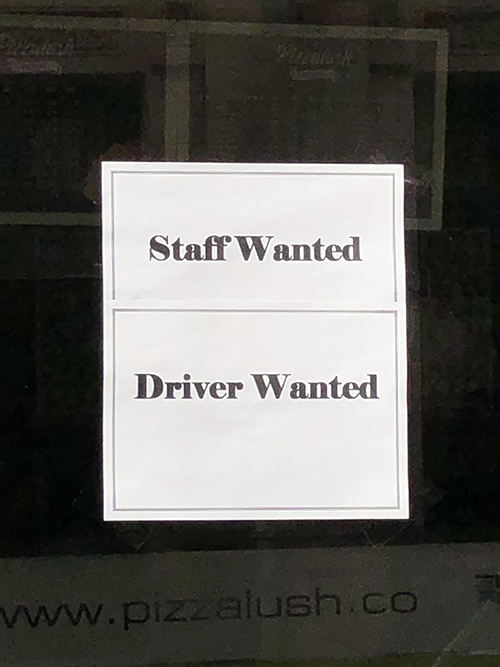


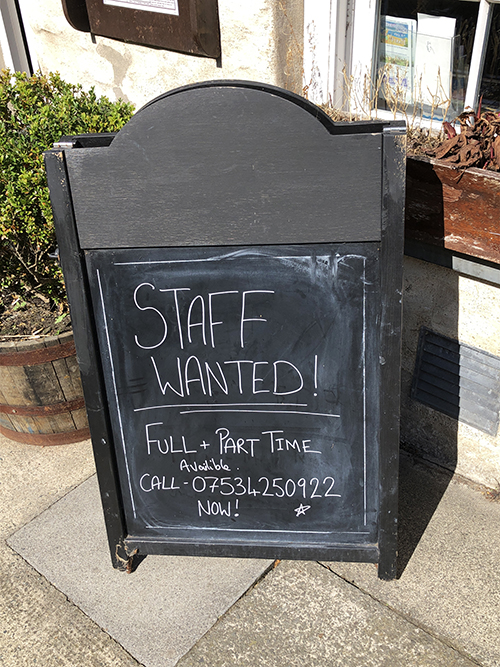

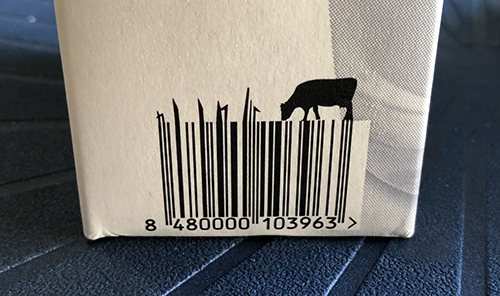




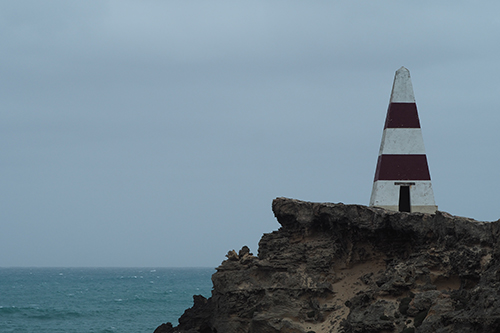
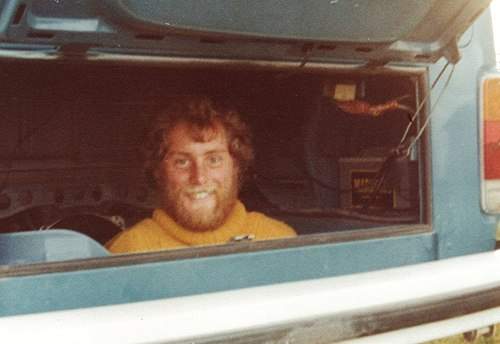

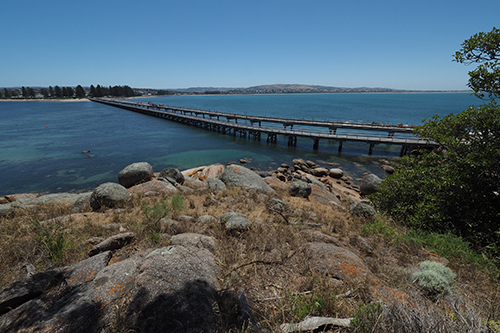

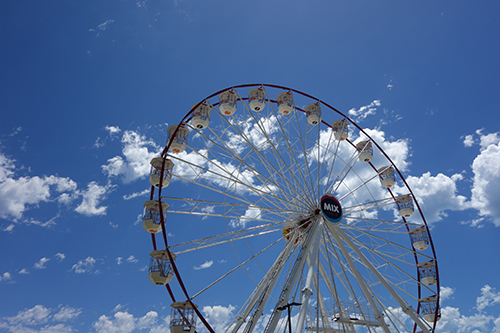




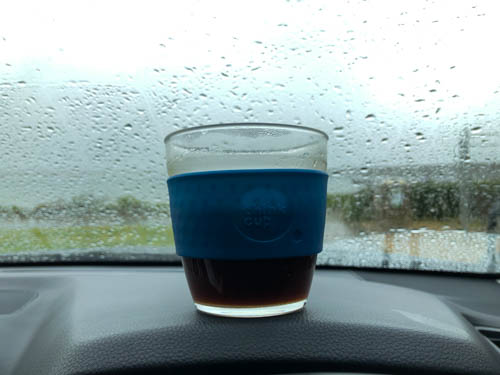
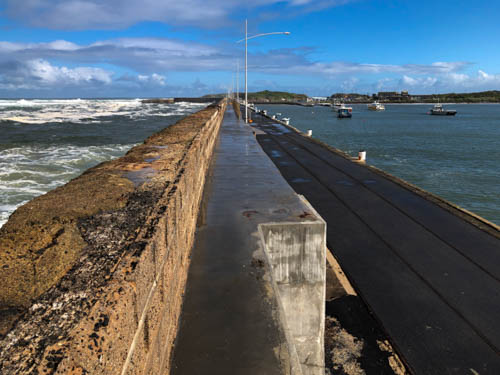

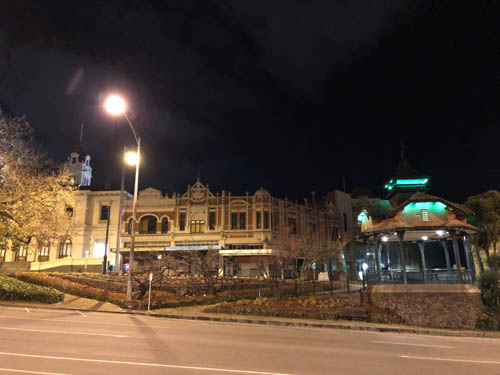






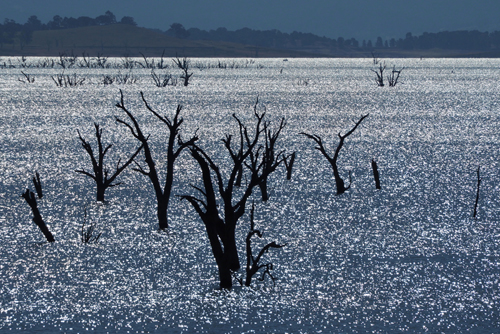

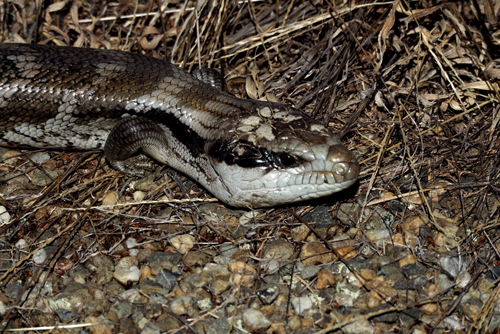











The best of both worlds.
Thursday, March 23rd, 2023On a recent ‘overseas trip’, well it was over the bay to Queenscliff, we visited the Queenscliff Brewhouse for lunch.
This is a great craft brewery and restaurant, just a short walk from the ferry terminal.
There I had an IPA (India Pale Ale), which isn’t unusual, but the beer certainly was.
It was described as a Chardonnay IPA.
I got chatting to a guy, who was sitting at a table near by, and he believed it was matured in Chardonnay oak barrels, which made perfect sense.
Then I got talking to the manager and got the full picture. He took me behind the bar and showed me the ‘Barman’s briefing notes’ that were attached to the beer tap.
And sure enough, it was matured in Chardonnay barrels but it also contained 7% of the wine itself.
It was a great American, West Coast style, IPA with a fruity character, obviously helped by the inclusion of the Chardonnay.
If you like your wine but want a beer, this is for you.
Posted in Comment, Good ideas, Travel | No Comments »